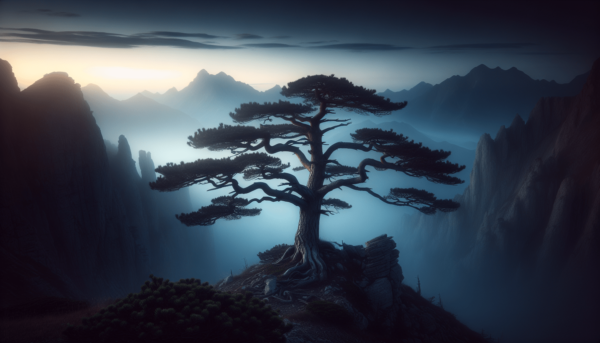Your cart is currently empty!

The Majestic Peak
Welcome to an exploration of the majestic peak! In this article, you will discover fascinating facts about mountains and their significance. You will learn about the diverse habitats found on mountains and understand the importance of these natural wonders. Let’s embark on a journey to uncover the beauty and mystery that these towering peaks have […]
Description
Welcome to an exploration of the majestic peak! In this article, you will discover fascinating facts about mountains and their significance. You will learn about the diverse habitats found on mountains and understand the importance of these natural wonders. Let’s embark on a journey to uncover the beauty and mystery that these towering peaks have to offer. Let’s dive into the world of mountains together!
The Majestic Peak: A Guide to Exploring the Beauty of Mountains
Understanding the Majesty of Mountains
Imagine standing at the foot of a majestic peak, looking up at its towering summit, and feeling the awe-inspiring power and beauty of nature. Mountains have an inherent ability to captivate us with their grandeur, mystery, and majesty. These colossal formations of rock, ice, and snow have been revered by cultures around the world for centuries, serving as sources of inspiration, challenge, and wonder. In this article, we will delve into the enchanting world of mountains, exploring their formation, significance, and the unique experiences they offer to those who venture to explore them.
The Formation of Mountains
Mountains are geological formations that rise prominently above their surroundings, typically with steep slopes and a defined summit. They are formed through a combination of tectonic activity, erosion, and volcanic processes that shape the Earth’s crust over millions of years. There are different types of mountains, each with its own distinct characteristics and formation processes.
Types of Mountains
-
Fold Mountains: These mountains are formed when tectonic plates collide, causing the Earth’s crust to buckle and fold. The Himalayas, the Rockies, and the Andes are examples of fold mountains.
-
Fault-Block Mountains: These mountains are created when large blocks of the Earth’s crust are uplifted along fault lines. The Sierra Nevada and the Tetons are examples of fault-block mountains.
-
Volcanic Mountains: These mountains are formed through volcanic activity, with molten rock and ash building up around a vent or crater. Mount Fuji in Japan and Mount Kilimanjaro in Tanzania are examples of volcanic mountains.
-
Dome Mountains: These mountains are created when magma pushes up from beneath the Earth’s crust but does not erupt, forming a rounded bulge of rock. The Black Hills in South Dakota are an example of dome mountains.
The Significance of Mountains in Culture and History
Throughout history, mountains have held a special significance for mankind, serving as symbols of strength, spirituality, and natural beauty. Many cultures have myths, legends, and religious beliefs associated with mountains, attributing them with divine or supernatural powers. Mountains have also played a crucial role in human evolution, providing sources of freshwater, fertile land for agriculture, and resources for survival.
Cultural and Spiritual Significance
-
Sacred Sites: Mountains are often considered sacred in many cultures, serving as places of worship, pilgrimage, and spiritual enlightenment. The Himalayas, for example, are revered in Hinduism, Buddhism, and other religions as the abode of gods and sages.
-
Artistic Inspiration: Mountains have inspired artists, poets, and writers throughout history, leading to the creation of timeless works of art, literature, and music that capture the essence of their beauty and majesty.
Historical Importance
-
Exploration and Adventure: Mountains have long been a source of exploration and adventure for mankind, with mountaineers, explorers, and adventurers seeking to conquer their summits and unravel their mysteries.
-
Scientific Discovery: Mountains provide valuable insights into the Earth’s geological history, climate patterns, and ecological diversity, serving as natural laboratories for scientific research and discovery.
Experiencing the Majesty of Mountains
Venturing into the heart of a mountainous landscape offers a transcendent experience that can rejuvenate the spirit, challenge the body, and inspire the mind. Whether you are a seasoned mountaineer or a casual hiker, there are endless opportunities to explore the beauty and mystery of mountains in all their forms.
Outdoor Activities in the Mountains
-
Hiking: One of the most popular ways to experience mountains is through hiking, which allows you to immerse yourself in the natural beauty of the landscape, challenge yourself physically, and enjoy the serenity of the wilderness.
-
Climbing: For those seeking a more exhilarating challenge, mountain climbing offers the opportunity to scale steep slopes, navigate treacherous terrain, and reach the summit for a panoramic view of the surrounding area.
-
Skiing and Snowboarding: In colder regions, mountains provide ideal conditions for skiing and snowboarding, with pristine slopes, deep powder, and stunning scenery that attract winter sports enthusiasts from around the world.
Ecotourism and Conservation Efforts
-
Ecotourism: Many mountainous regions are now promoted as ecotourism destinations, where visitors can explore the natural environment, learn about local wildlife and ecosystems, and support sustainable conservation efforts.
-
Conservation: Mountains are fragile ecosystems that are vulnerable to human development, climate change, and environmental degradation. Conservation efforts are crucial to protecting these pristine wilderness areas for future generations to enjoy.
Famous Mountain Ranges Around the World
-
The Himalayas: Located in South Asia, the Himalayas are the highest mountain range in the world, home to Mount Everest, K2, and a wealth of cultural and natural diversity.
-
The Rocky Mountains: Stretching from North America to South America, the Rocky Mountains are a vast range of rugged peaks, deep valleys, and diverse ecosystems that offer a playground for outdoor enthusiasts.
-
The Alps: Nestled in Europe, the Alps are renowned for their picturesque villages, alpine meadows, and world-class ski resorts, attracting millions of visitors each year.
-
The Andes: Running along the western coast of South America, the Andes are the longest mountain range on Earth, with towering peaks, deep canyons, and rich biodiversity.
Conclusion: Embracing the Majesty of Mountains
As you embark on your journey into the world of mountains, remember to tread lightly, respect the natural environment, and immerse yourself fully in the awe-inspiring beauty of these ancient giants. Whether you seek adventure, solitude, or spiritual enlightenment, the majesty of mountains will always be there, inviting you to explore, discover, and connect with the natural world in ways that are both profound and life-changing. So go ahead, venture forth into the unknown, and let the mountains guide you on a path of discovery, wonder, and transformation.



